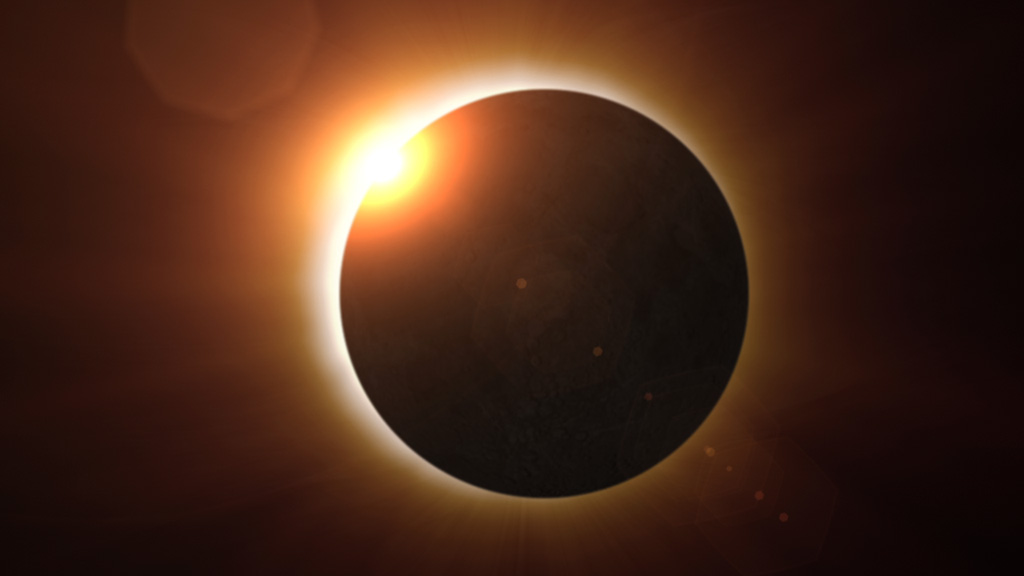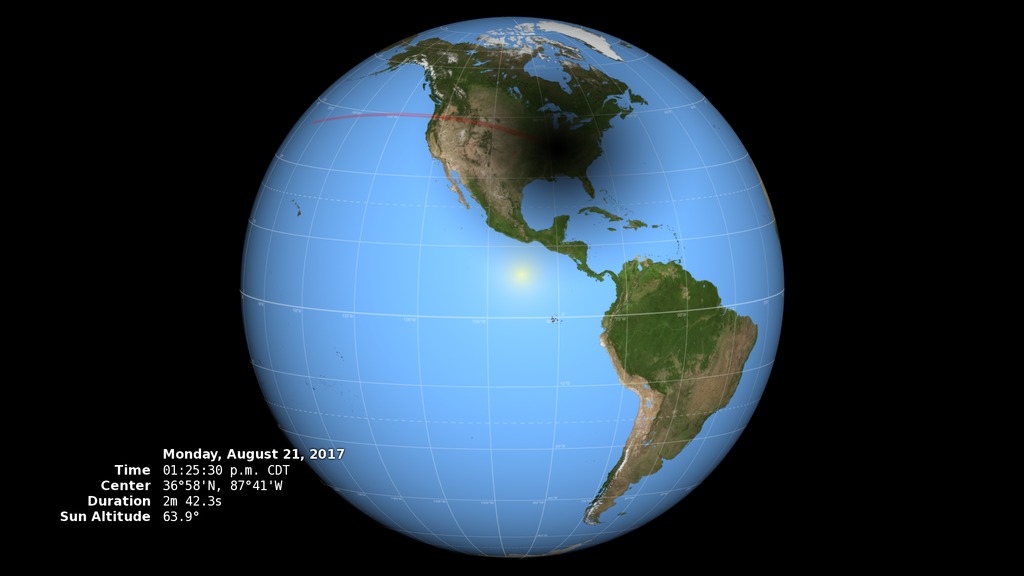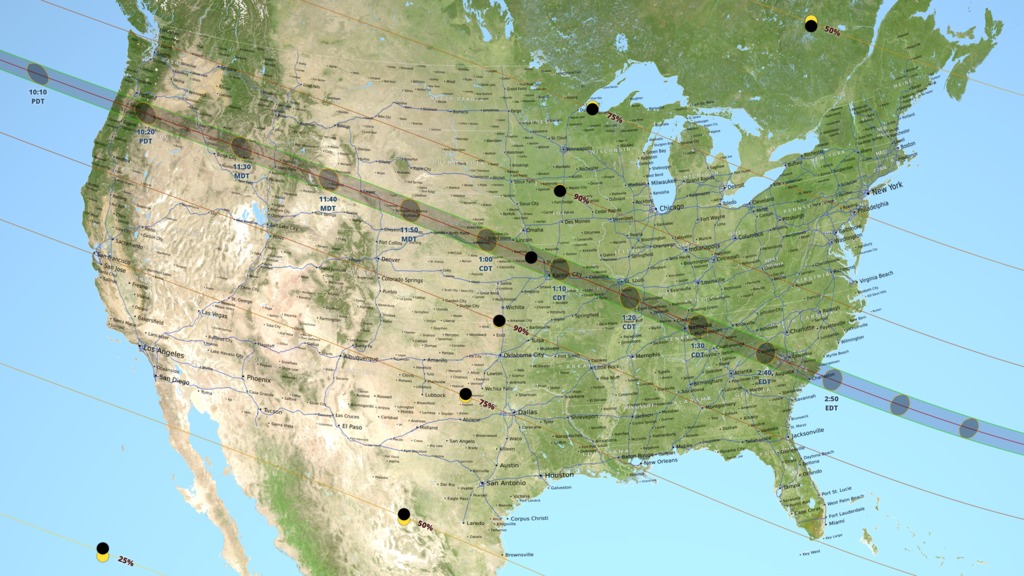
Get ready for the total solar eclipse of 2017! The show’s about to start.
On Monday, Aug. 21, a total solar eclipse — the first to pass across the United States from coast to coast since June 8, 1918 — will affect an estimated 500 million people across North America. It will be created when the moon passes between the sun and Earth and depending on where you’re located, the moon will block a part or all of the sun and create the surreal effect of nighttime during the day.
Most people, including everyone at Florida State University, will experience a partial solar eclipse as the moon’s shadow sweeps across the United States at more than 1,500 miles per hour. Observers in a roughly 70-mile-wide path from Oregon to South Carolina will be located in the darkest shadow, called the “path of totality.” Totality in any one place will last only a couple of minutes. The longest stretch of totality blotting out the sun will happen for 2 minutes, 40 seconds in southern Illinois.
FSU administrators are reminding students that it is not safe to look directly at the sun during an eclipse, and the Oglesby Union Student Activities Center has been able to order a limited supply of solar glasses to help keep students safe. Most of the glasses are dedicated to student groups, but some free pairs will be handed out starting at 9 a.m. on the day of the eclipse at the Oglesby Union Green. The solar glasses will be available to students on a first-come, first-served basis. Supplies will be limited.
At exactly 1:10 p.m., the eclipse will begin in Tallahassee. That’s when the Union Green will come alive with music, and students will hand out eclipse-related information. Just after 2:30 p.m., a special photo will be taken for FSU’s archives. The peak of the eclipse on campus will happen at 2:42 p.m. and it officially ends at 4:07 p.m.
“We want to get one of those retro-type photos where everyone is looking up at the sky wearing solar safety glasses,” said Todd Shaver, program director at Oglesby Union. “Our festivities will run from about 1 to 4 o’clock.”

It will be even more important for people in Tallahassee to wear solar glasses since the eclipse in North Florida will be partial and allow UV rays to reach Earth. An interactive map on NASA’s website indicates Tallahassee will experience 86 percent totality.
NASA reports the only safe way to view the celestial sight is with special solar filters. Dark sunglasses do not provide enough protection against UV rays — they can burn the cornea’s transparent outer layer of cells or damage the light-sensitive cells in the retina at the back of the eye.
Eclipse glasses or handheld viewers must meet an international standard known as “ISO 12312-2.” Only five reputable companies make glasses or viewers matching that standard: American Paper Optics, Baader Planetarium (AstroSolar Silver/Gold film), Rainbow Symphony, Thousand Oaks Optical and TSE 17.
NASA offers these safety tips for the 2017 Solar Eclipse:
- Do not look directly at the sun.
- Solar filters, or eclipse glasses, provide the only safe way to look directly at a partial or total eclipse. Make sure they meet the ISO 12312-2 standard.
- Make sure the solar viewer or glasses include the manufacturer’s name and address.
- Do not use solar glasses that are older than three years or have scratched lenses
- Do not use homemade filters or ordinary sunglasses.
- Do not look at an eclipse through an unfiltered camera viewfinder, telescope, binoculars or other optical device even with a solar filter. Those items magnify sunrays and can quickly damage the retina.
- Always supervise children who use solar filters.

The path of totality will track across the United States from the Northwest to the Southeast through these states: Oregon, Montana, Idaho, Wyoming, Nebraska, Iowa, Kansas, Missouri, Illinois, Kentucky, Tennessee, Georgia, North Carolina and South Carolina. The shadow outside that track will affect North and Central America, parts of South America and northwestern Europe.
In the path of totality, the sun will be blocked for about 2 minutes and the sun’s hidden solar corona — its outer atmosphere — will become visible and create eerie diamond rings of light, weather permitting. NASA describes it as one of nature’s most awesome sights.
Eric Hsiao, assistant professor in FSU’s department of physics, is traveling to South Carolina with the FSU Astrophysics group to view totality there. He’s looking forward to the experience.
“The total eclipse of 1878 crossed the American Wild West,” Hsiao said. “It inspired tremendous public support and jump-started America’s rise to become the global leader in science. We hope the 2017 total eclipse will rekindle our sense of wonder and reaffirm our commitment to science education and research.”
The next chance to see a total solar eclipse won’t happen until April 8, 2024, but that one will not cross the entire country. It will move north through Texas, across the Midwest (southern Illinois again) and exit in the Northeast. The next total solar eclipse to affect the entire U.S. — starting in California and exiting in Florida — will happen Aug. 12, 2045, and that one will pass directly over Florida State University. Mark your calendars!




